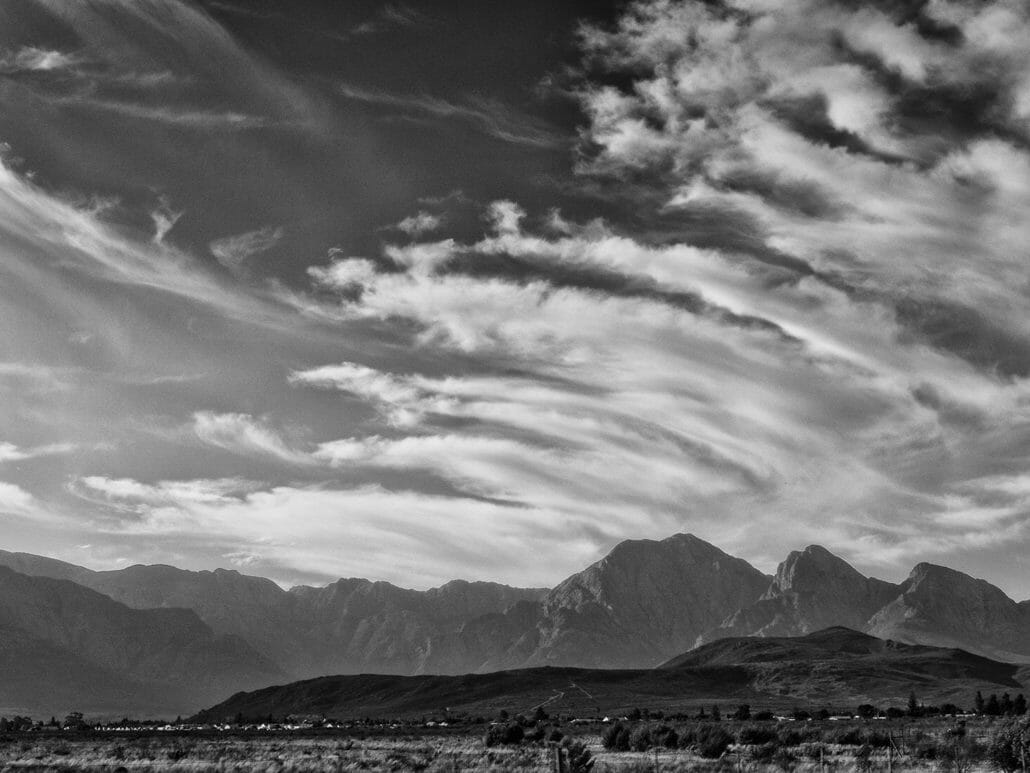Photo by Nicholas Coleman
Coleman Collection #3
PRODUCER
Rio Largo
CULTIVAR
Favalosa
Harvest Date
May 2016
REGION
Scherpenhewel, South Africa
Though not yet renowned for its olive cultivation, several young trailblazers are putting South Africa on the map with world-class oil. Leading this tightly knit community is expert miller Nick Wilkinson from Rio Largo. His grove is nestled in the Scherpenhewel valley, flanked by the Langeberg Mountains to the North and the Hottentot mountains to the West. The forceful Northwestern wind slams the mountains and is redirected away from their olive trees, which thrive in an arid pocket known as a rain shadow. Much like the grape vine, an olive tree thrives when reaching for nutrients during a period of hardship, resulting in healthier fruit and vibrant, structured oil.
The most popular cultivars are the Frantoio and Leccino olives, but the varied and disparate microclimates are home to the Mission, Favalosa, I-77, Coratina and Nocellara among others. After a comprehensive review I’ve selected a monocultivar Favalosa, also known as FS-17. It’s a dwarf variety and clone of the famed Frantoio olive of central Italy. These Favalosa olives are hand-harvested when 85% lemony-green and coddled to the mill within hours. The oil is meticulously cold extracted in a stainless steel Toscana Enologica Mori mill, designed under the vision of Italian oleologist Giorgio Mori.
The Favalosa exudes aromas of bitter herbs and freshly cut grass with a taste of almond, mint, leaves, medium bitterness and an elongated peppery finish. Its balance makes it applicable to a plethora of dishes such as grilled seafood and vegetables while cutting through heartier cuisines like soup and charred red meat.
South Africa has three main wine-growing regions: Coastal region, Boberg Region, and Breede River Valley Region. Within these areas are smaller districts, further divided into wards (similar to appellations). Stellenbosch, in the Coastal Region, is considered the best place to make wine. Swartland and Cape Point are other districts where the quality of wine is increasing.
Like many New World countries, South Africa has a long history of wine production, but the wines have always played a supporting role on the world’s stage. The industry is still undergoing major soul searching, but the climate, soil, and passion are all in place – and the future looks rather bright. In the words of famed wine writer Oz Clarke, “justifiable self-confidence is taking place of complacency.”
The most widely planted white grape is Chenin Blanc, accounting for one fifth of all vineyards. Known locally as steen, the wines are plump and fruity with lower levels of acidity, akin to the whites of the Loire Valley. The South African expressions of the grape are pleasant and are getting much better year after year as profits are reinvested into better vineyard mechanics and winemaking equipment. Producers are also crafting simple yet delicious wines from Chardonnay, Sauvignon Blanc, Colombard, Riesling, and Voignier. The following producers make excellent introductory white wines: Stellenbosch Vineyards, De Trafford, Warwich Estate, and Franschhoek Cellars.
We’ll examine the red wines of South Africa with the next installment of the Grove and Vine Coleman Collection later this year.



